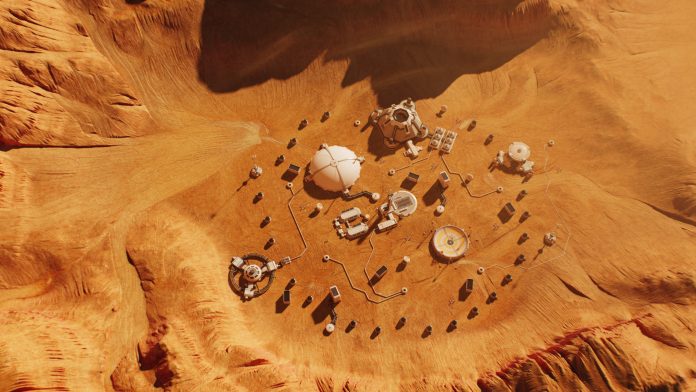Recent breakthroughs in Mars exploration bring humanity closer to realising Mars immigration dreams. The key lies in overcoming the challenge of oxygen scarcity for long-term survival
Scientists now focus on harnessing water activity on Mars to address the oxygen challenge. The recent revelation of water activity opens possibilities for decomposing water to generate oxygen, a crucial step for sustaining human life on the red planet.
Automated catalyst synthesis with AI
A team of scientists from the University of Science and Technology of China pioneered an automated approach to synthesise oxygen evolution reaction (OER) catalysts using Martian meteorites. Their innovative use of robotic artificial intelligence (AI) by chemists marks a significant step toward self-sufficiency in Martian materials.
AI chemist’s ingenious process
The AI chemist analyses Martian ores, conducts pretreatments, and utilises quantum chemistry simulations for catalyst optimisation. Through real-time machine learning, it rapidly predicts optimal OER catalysts. In a groundbreaking achievement, the AI chemist produced a stable catalyst using Martian meteorites under unmanned conditions, outperforming human chemists in just two months.
Oxygen factory on Mars: A real possibility
With this AI-driven technology, the vision of establishing an oxygen factory on Mars inches closer to reality. The AI chemist’s ability to complete complex optimisations in a fraction of the time required by human chemists is a game-changer. The team envisions the AI chemist evolving into a versatile platform for diverse chemical syntheses, revolutionising our approach to Mars immigration.
In conclusion, the integration of AI in catalyst synthesis not only propels Mars’s immigration dreams but also accelerates the broader field of material synthesis. This breakthrough technology, reducing the time and resources needed for catalyst development, demonstrates the potential for creating sustainable habitats on Mars and represents a significant leap toward realising the age-old aspiration of human life beyond Earth.











